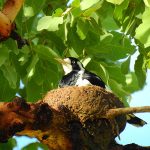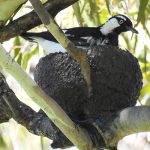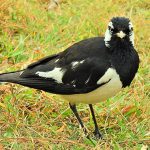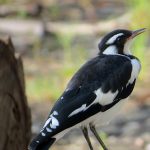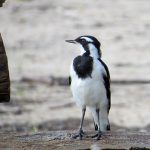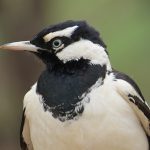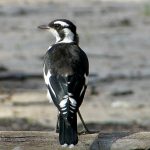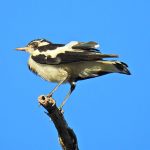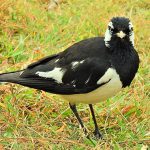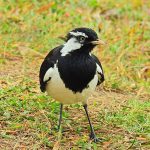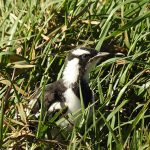MAGPIE-LARK
The Magpie-lark, also known as the Peewee or Mudlark, is a distinctive bird native to Australia. Despite its name, it is not closely related to true magpies or larks and is actually a member of the family Monarchidae.
The Magpie-lark is a medium-sized bird with a length of around 25-30 cm. It has a black and white plumage pattern that distinguishes it from other Australian birds. The male and female have slight differences. The male has a horizontal black eye-mask , black throat & white eyebrow while the female has a vertical black eye-mask and a white throat.
Magpie-larks are known for their melodious songs, consisting of varied whistles, chatters, and clear calls. They are also famous for their distinctive aerial displays during breeding season, where they perform intricate flight patterns and call loudly.
These birds are found throughout Australia, except in the driest areas of the continent. They inhabit a wide range of habitats, including woodlands, open forests, grasslands, wetlands, and urban areas. They have adapted well to human-altered environments and are frequently seen in parks, gardens, and suburban areas.
Magpie-larks are primarily insectivorous, feeding on a variety of insects, spiders, and other small invertebrates. They forage by walking on the ground, probing the soil or searching through leaf litter for prey. They may also catch insects in mid-air or on the water surface.
Breeding season for Magpie-larks typically occurs from July to December. They are monogamous birds and form long-term pair bonds. The female builds a cup-shaped nest using mud, grass, and other plant materials, usually placed on horizontal branches, building ledges, or man-made structures. Both parents share incubation duties and care for the young.
The Magpie-lark is a well-known and charismatic bird in Australia, often seen and heard in both urban and natural environments. Its distinct appearance, musical calls, and aerial displays make it a popular and recognizable species among locals and birdwatchers alike.

